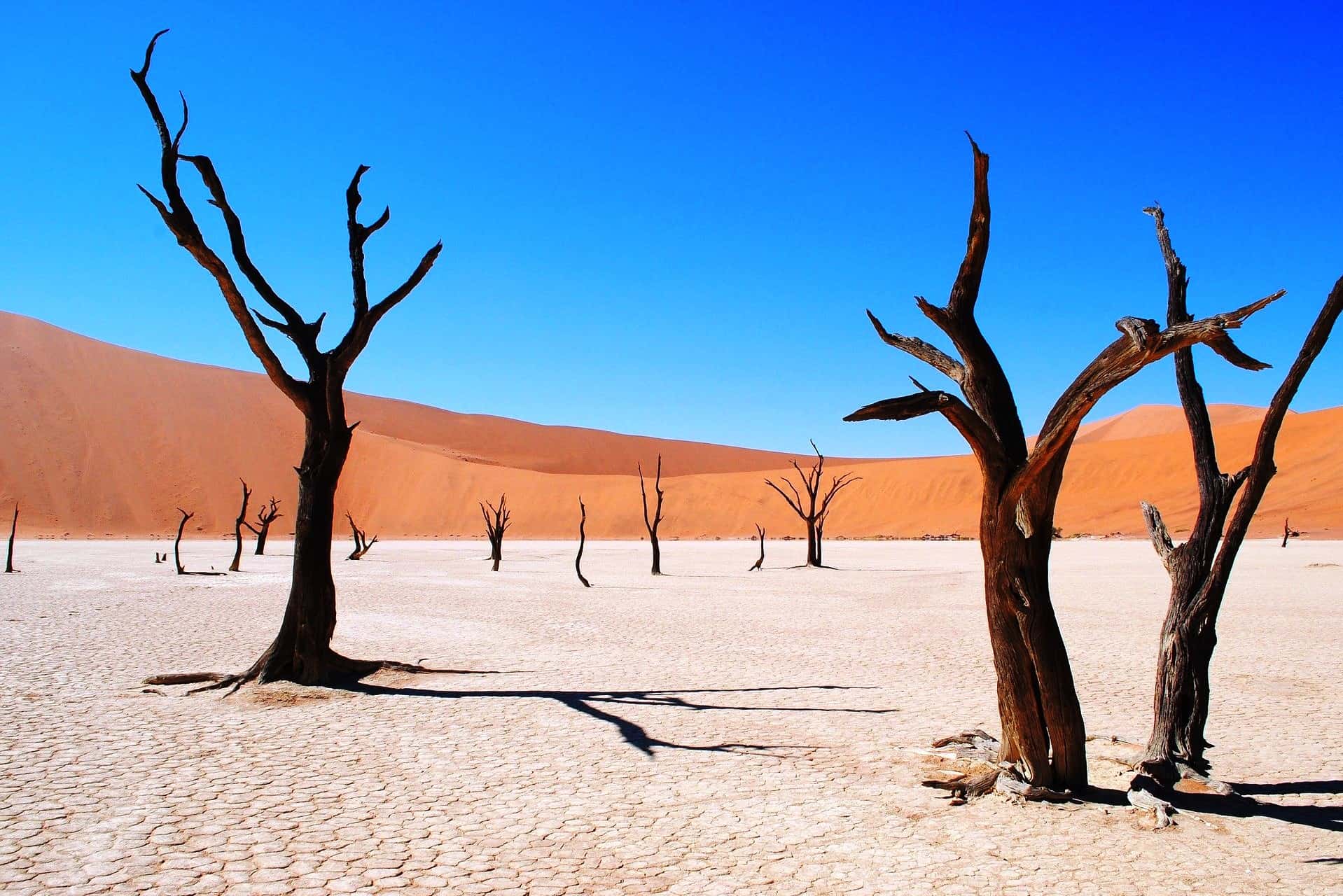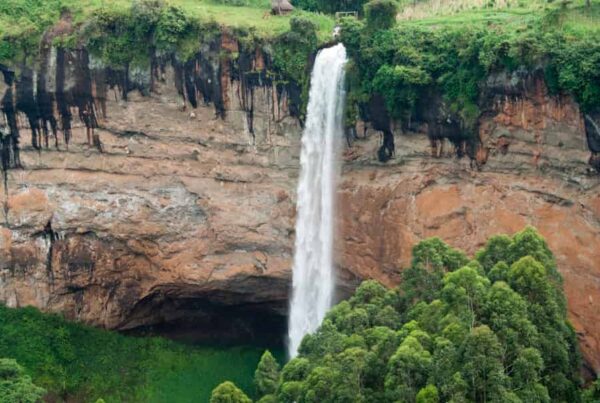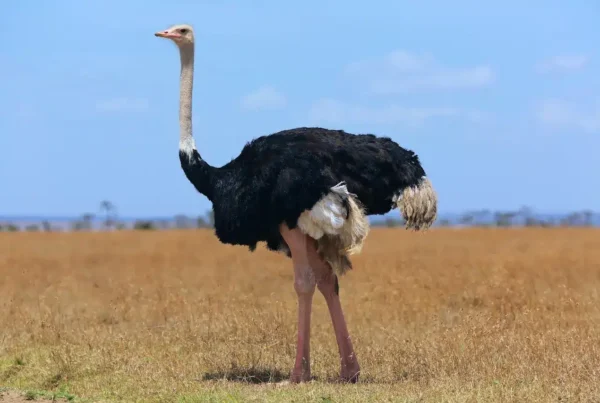Planning a Trip To Visit Deadvlei in Namibia
In the vast, arid soul of the Namib Desert lies a place where the sands shift with the wind, but the trees have stood still for nearly a thousand years. Deadvlei, hidden deep within Namibia’s Namib-Naukluft National Park, is not just a location—it is a haunting, otherworldly spectacle, a landscape so surreal and evocative that it has become an icon of Namibia and a global symbol of the sublime power of nature.
To stand in Deadvlei is to step into a painting rendered by time and shaped by elemental forces. The ground is pale and cracked underfoot, the skeletal trees—blackened by centuries of sun and drought—cast long shadows across the clay pan, and the surrounding dunes rise like flame-colored waves frozen in motion. The silence is absolute. The beauty is overwhelming. This is a place that defies logic and transcends photography. It must be felt, not just seen.
Planning a journey to Deadvlei is not a spontaneous affair. It requires intention, preparation, and respect for the fragile desert environment. Those who seek its secrets must travel far, rise early, and embrace the heat, the dust, and the humbling scale of Namibia’s most dramatic landscape. But for those who make the effort, the reward is a travel experience that is unforgettable, meditative, and soul-stirring.
Understanding the Origins of Deadvlei: Nature’s Monument to Time
Deadvlei—meaning “dead marsh” in Afrikaans—is a clay pan formed when the Tsauchab River once flowed through the desert, feeding shallow pools that nourished camelthorn trees and created a brief oasis in the heart of the Namib. Over time, shifting dunes blocked the river’s path, cutting off the water supply and dooming the trees to die in place. Yet, due to the arid conditions, they never decayed. They were preserved—frozen in time as blackened silhouettes etched against the white clay and red dunes.
These trees, some more than 900 years old, stand like sentinels across the pan. Their gnarled branches stretch skyward as if in silent protest or prayer. Around them, the dunes—some rising over 300 meters—form a natural amphitheater of sculpted sand and shifting shadow. Most famously, Big Daddy, the highest dune in the area, towers over the pan and offers a dramatic vantage point for those who climb it.
The science behind Deadvlei’s formation is fascinating, but it is the emotional and visual impact that stays with visitors long after they’ve left. It is a place of paradox—death and stillness, yet staggering beauty. Silence and isolation, yet profound connection.
How to Get There: Navigating the Desert
Reaching Deadvlei requires strategic planning and physical effort, but the journey itself forms part of the reward. The nearest gateway town is Sesriem, a small settlement that serves as the entrance to the Namib-Naukluft National Park. From Sesriem, travelers must drive into the park at sunrise, when the gates open and the desert begins to awaken.
The initial stretch of the journey is along a well-maintained tar road that leads toward Sossusvlei, the broader area in which Deadvlei is located. This route is visually spectacular, flanked by sweeping dunes bathed in early morning light. However, the last portion of the journey—from the Sossusvlei car park to Deadvlei itself—is along a deep-sand 4×4 track, impassable for standard vehicles. Visitors without 4×4 experience are advised to use the park’s shuttle service or join a guided excursion.
From the 4×4 drop-off point, the final leg is completed on foot. A walk of around one kilometer across open dunes and dry pans leads to Deadvlei. The sand underfoot can be soft and the sun already intense by mid-morning, so timing and preparation are crucial. It is advised that the journey be started as early as possible, ideally arriving at Deadvlei just after sunrise, when the light is golden and the heat still bearable.
When to Visit: Timing the Desert’s Mood
Deadvlei is accessible year-round, but certain seasons and times of day enhance the experience significantly. The cooler months—from May to September—offer milder temperatures, making hiking and photography more comfortable. The skies during these months tend to be clear and crisp, ideal for stargazing and capturing the stark contrasts of light and shadow.
Mornings, especially just after sunrise, are considered the optimal time to visit. At this hour, the low-angle sunlight carves dramatic shadows across the dunes, creating a painterly effect that accentuates the textures of sand, clay, and wood. The black trees against glowing orange dunes and blue skies produce a visual contrast that feels almost unreal.
Midday should be avoided where possible, as the desert heat becomes oppressive, the colors flatten under harsh light, and the physical exertion of walking on sand becomes more strenuous. Evenings bring cooler temperatures and softer light but pose logistical challenges due to the early park closing times.
Preparing for the Desert: Practical Guidance for an Unforgiving Landscape
While Deadvlei is one of the most photogenic places on Earth, it is also an environment of extremes. Visitors must arrive well-prepared for conditions that can shift rapidly and pose real challenges. Clothing should be lightweight but sun-protective, with wide-brimmed hats, sunglasses, and long sleeves essential. Footwear should support walking on both sand and hard-packed clay, and ample water must be carried at all times.
Photography gear, for those hoping to capture the magic, should include a wide-angle lens and neutral density filters for managing the brightness of the desert sun. Tripods can help in the early morning low light, while drone usage is restricted and should be confirmed with park authorities.
Respect for the environment is paramount. Deadvlei’s fragile surface is easily damaged, and the preservation of this site relies on travelers adhering strictly to marked paths and regulations. What makes this place sacred is its stillness, its silence, and its undisturbed state.
The Spiritual Dimension: Why Deadvlei Moves the Soul
More than a destination, Deadvlei is a meditation in stillness. The trees that died and yet refuse to fall seem to echo themes of endurance, silence, and the beauty of decay. The scale of the dunes, the weight of the sky, the whispering wind—together, they conspire to create a deeply reflective atmosphere.
Travelers often speak of the profound quiet, where even the sound of breath feels amplified. This absence of noise allows space for awe, for introspection, and for something rare in modern travel—humility. In Deadvlei, one becomes not the observer of a landscape, but a participant in its silence.
The spiritual impact of Deadvlei cannot be measured in photos or itineraries. It is something that lingers internally, shaping the way one sees beauty, impermanence, and time. And that is perhaps its greatest gift.
Where to Stay: Desert Retreats and Stargazing Sanctuaries
Accommodations around Deadvlei range from rustic campsites in Sesriem to luxury desert lodges that blend seamlessly into the surrounding dunes. Many of these lodges offer guided tours to Deadvlei, ensuring safe transport, early access, and enriched interpretation of the landscape. Some are designed with sustainability in mind, using solar power and water conservation techniques to minimize impact on this delicate ecosystem.
What all have in common is the extraordinary desert night sky, which reveals itself after sunset in a dazzling canopy of stars. In this part of Namibia, far from light pollution, the Milky Way can be seen with startling clarity, creating evenings as unforgettable as the mornings spent wandering through clay and silence.
Discover Deadvlei with WildHorn Africa
A trip to Deadvlei is not just another line on a bucket list—it is a pilgrimage into one of the planet’s most extraordinary landscapes. To walk among its silent trees, climb its fire-red dunes, and witness the dance of light and shadow is to encounter beauty on a mythic scale.
To make the most of such a journey requires more than a GPS and a guidebook. It requires insight, expertise, and a deep respect for the spirit of place. WildHorn Africa, with its passion for crafting immersive and meaningful African experiences, offers tailored journeys that honor the land, its people, and the traveler’s desire for wonder.
Whether as part of a broader Namibian adventure or as a singular destination, let WildHorn Africa guide your journey to Deadvlei—where time stands still, silence speaks, and the desert welcomes you home.





 WildHorn Africa – Authentic and unforgettable tours across Africa, guided by local experts who know the land, wildlife, and culture best.
WildHorn Africa – Authentic and unforgettable tours across Africa, guided by local experts who know the land, wildlife, and culture best.


